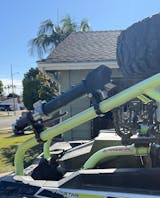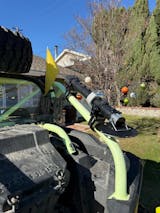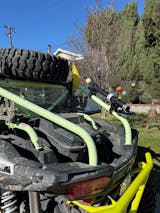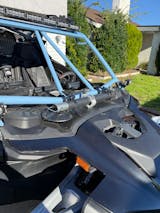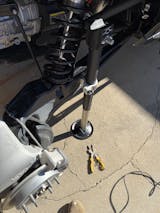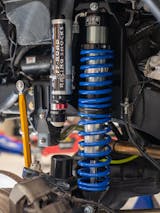
In the early days of racing safety consisted of jeans, a t-shirt and putting out your cigarette before you “really started going”. A series of fiery accidents in the 1950’s and 60’s spurred the creation of the firesuit and introduced racing to Nomex, a Dupont material that Nasa was using for the Apollo program.

Now there were some missteps along the way, like companies testing with Asbestos driving suits in the 1970’s. But overall fire suits became more fire resistant, breathable and reduced in layers. With a few decades of practice they became the pajama-like super comfy 2 or 3 layer products that we wear today.
Note: be sure to ask the manufacturer how they want you to clean your fire suit. If done incorrectly you can reduce the effectiveness of the suit.

The Hans device also had a rocky start. First tested in 1989 and proven to reduce the load on the head and neck by approximately 80%, it was met with criticism. With many drivers saying they would rather cross their fingers and test their luck. Again it took a series of fatal crashes to convince road racing it was a good thing. Off road followed suit less than a decade later.

Safety harnesses found their way into vehicles way back in 1885. These lap belts, which looked more like primitive climbing harnesses, kept passengers safe in taxis. Originally used to hold pilots in their gliders, this technology was not used in racing until 1922, when the first race car harness was commissioned. But the idea, like the others on this list, was fought by many racers. This time because they thought it was safer to be thrown clear of the car in a crash, so they would not get burned if there was a fire. Which seems crazy now, but people thought it smart then. Luckily research and proof prevailed. By the late 1950’s the harnesses became commonplace in US racing. From there harnesses saw a similar progression in material, design and use. Including the addition of more points of contact to better control the pelvis, and upper body during impact or roll-over. Today 6 or even 7 point harnesses are available from multiple manufacturers online. Not only do 5 point or greater belts improve safety exponentially. They also reduce fatigue. This is because when properly secured you no longer have to tense your muscles to counteract the forces of acceleration…well this does assume you have a “shell” or racing seat as well.

Pro-Tip: how you mount your harnesses (angles and distances) will make a huge difference in comfort while you are belted in and also how effective the belts are at holding you into the seat during an impact or roll. Please consult your harness manufacturer’s guidelines when installing your harnesses. The last thing you want is - for example - to mount the anchors for the shoulder belts too low, compressing your spine and not holding you properly in the seat.

Speaking of seats, the first true bucket seats were used in vehicles in the early/mid 1900’s to cut weight, reduce cost, fit in smaller spaces, make accommodations for manual transmission tunnels, or better support Willy's drivers off road…depending on the source you reference.
What all people could agree on was that this style of seat helped drivers better control their cars, by giving them more lateral support than a bench seat. With help from companies like Recaro and Corbeau, the market grew. Increasing the rate at which the product evolved. Less than a decade later (1974 to be exact) the first shell or on piece seat was created by Recaro. Racers jumped on the concept as it increased safety greatly and again reduced fatigue on drivers. As the product evolved it became apparent that the seat was as important as the harnesses. It also became clear that the increased safety and comfort only came from shell seats that held drivers secure. Supporting hips, torso and shoulders from all angles and not letting the body move were the keys to this. No secondary impacts …There is a reason that no real race cars use “suspension seats”. You should not either.
These technologies have made racing the safest it's ever been. And what's better is all of this safety gear is available for you and I to purchase today. They are only a quick Google search away.
It’s not the sexiest of topics, but while on Google please read up on safety, Do it before your next adventure. You may be surprised by what you learn about suits, seats, harnesses, installation and g-forces … it could just save your life or the life of a loved one.










